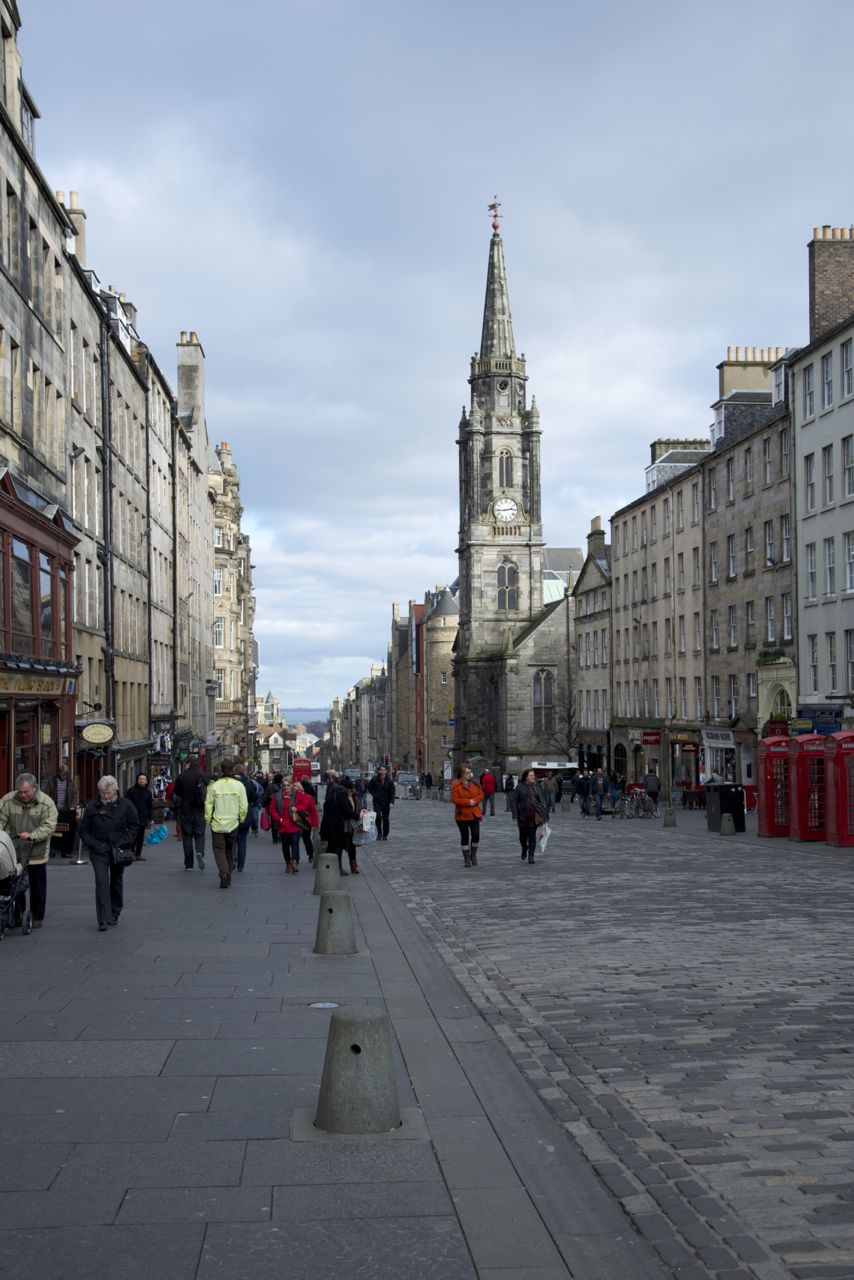Chuck Wolfe's recent reconnaissance of Edinburgh provides a foil for his rallying cry: Going forward, let’s not discount the influence of history’s recurring themes in how we redevelop the urban realm.

 Through words and photographs, Wolfe argues for a longer view when advocating for the sorts of urban change sought today, including increased awareness of how similar situations were addressed in the past. He notes:
Through words and photographs, Wolfe argues for a longer view when advocating for the sorts of urban change sought today, including increased awareness of how similar situations were addressed in the past. He notes:
Height, density, use/control of land and public health in urban settings have evolved for a very long time. We can build on this urban history of reinvention and renewal and think more universally about how past, present and future define urban development.
Citing others, he explains change in cities as a constant, and how specific themes of long-term habitation can create broader ways of understanding the cyclical nature of urban reinvention. Examples include current trends towards increased height, cooperative living spaces and smaller dwellings, compared with medieval forces that brought similar conditions:
[P}laces like Edinburgh’s world heritage areas show that our current ability to meet these goals safely is reflective of lessons learned long ago, when overpopulated and unsanitary conditions within city walls eventually inspired new understandings of urban disease control.
Wolfe summarizes lessons from Edinburgh Old Town for today's alleys and laneways, and resilient adaptive reuse. From Edinburgh's 18th century New Town he finds a physical form that provides testament to the power of interventionist planning when a municipality has a broad swath of land assembled for a common purpose.
He concludes with questions about the nature of urban change, and how a global economy integrates with an evolving urban artifact:
[T]o an American observer from Seattle, one hometown image—the Starbucks logo—particularly stands out... storied history and modern lifestyle communicate their “age value” to one another from a vaunted wide avenue of the New Town. Looking up from the New Town’s George Street, midway between St. Andrews and Charlotte Squares, medieval past and global future speak to their uniting element: human ingenuity and reinvention, across the ages.
FULL STORY: why urban history matters

Planetizen Federal Action Tracker
A weekly monitor of how Trump’s orders and actions are impacting planners and planning in America.

Chicago’s Ghost Rails
Just beneath the surface of the modern city lie the remnants of its expansive early 20th-century streetcar system.

Amtrak Cutting Jobs, Funding to High-Speed Rail
The agency plans to cut 10 percent of its workforce and has confirmed it will not fund new high-speed rail projects.

Ohio Forces Data Centers to Prepay for Power
Utilities are calling on states to hold data center operators responsible for new energy demands to prevent leaving consumers on the hook for their bills.

MARTA CEO Steps Down Amid Citizenship Concerns
MARTA’s board announced Thursday that its chief, who is from Canada, is resigning due to questions about his immigration status.

Silicon Valley ‘Bike Superhighway’ Awarded $14M State Grant
A Caltrans grant brings the 10-mile Central Bikeway project connecting Santa Clara and East San Jose closer to fruition.
Urban Design for Planners 1: Software Tools
This six-course series explores essential urban design concepts using open source software and equips planners with the tools they need to participate fully in the urban design process.
Planning for Universal Design
Learn the tools for implementing Universal Design in planning regulations.
Caltrans
City of Fort Worth
Mpact (founded as Rail~Volution)
City of Camden Redevelopment Agency
City of Astoria
City of Portland
City of Laramie





























